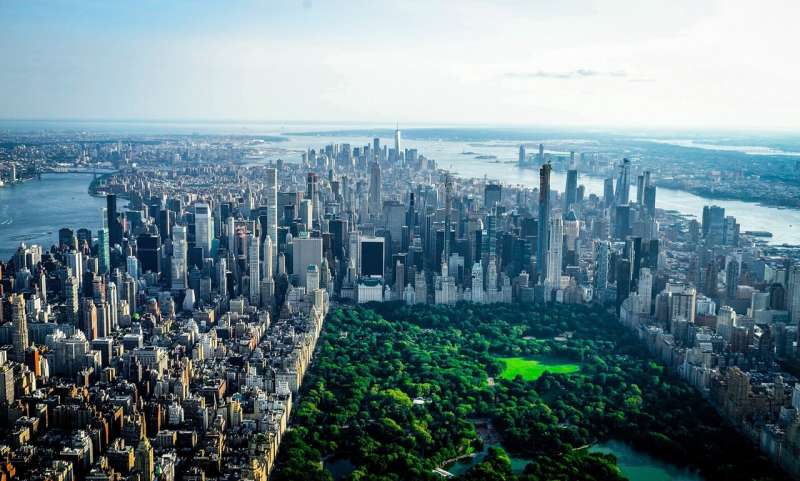Urban nature is often plentiful but inaccessible, says study

Living near parks, trees, streams, coastlines, and other green and blue natural features may promote physical and mental well-being.
With those benefits in mind, dozens of mayors from the C40 Cities Climate Leadership Group, which includes large cities from Seattle to São Paulo, Stockholm to Shanghai, and more, signed the Urban Nature Declaration in 2021. In it, they agreed to work toward two goals: reaching at least 30% coverage of each city's total area with green space and ensuring that no less than 70% of its population can access nearby green and blue spaces within 15 minutes—all by 2030.
Now, research published in GeoHealth by Greta K. Martin and colleagues suggests that most of the 96 C40 cities, not just the 31 declaration signatories, have achieved the green space coverage goal, but fewer than half have achieved the accessibility target.
Many studies of green space and health outcomes use the normalized difference vegetation index, which uses visible and near-infrared light to measure vegetation density. However, this metric does not capture the accessibility, usability, or category of green spaces. There is not a standardized measurement metric for blue spaces.
So to evaluate the cities' progress, the researchers developed a new analytical framework that uses satellite imagery from the European Space Agency's WorldCover and Sentinel-2A data sets to determine the coverage area and location of natural spaces within each city. This framework allowed them to use multiple metrics for tracking each city's progress toward the Urban Nature Declaration targets.
They found that 80% of the 96 cities have achieved at least 30% green space coverage, but only 47% of the cities have natural spaces that are easily accessible to at least 70% of people living there. In some cities, natural spaces are highly concentrated, whereas in others the spaces are more dispersed.
The researchers also developed a method for translating the two goals into a metric used for many epidemiological studies. In the future, this metric will help them investigate the health benefits of expanding natural space in cities.
More information: Greta K. Martin et al, Tracking Progress Toward Urban Nature Targets Using Landcover and Vegetation Indices: A Global Study for the 96 C40 Cities, GeoHealth (2024). DOI: 10.1029/2023GH000996
Provided by Eos
This story is republished courtesy of Eos, hosted by the American Geophysical Union. Read the original story here.
No comments:
Post a Comment